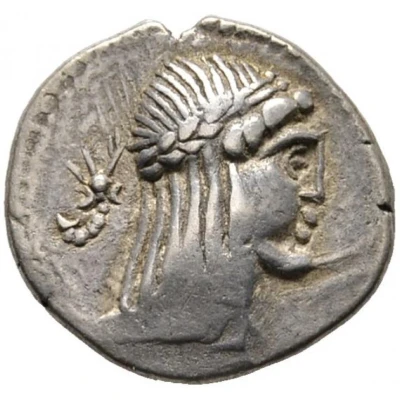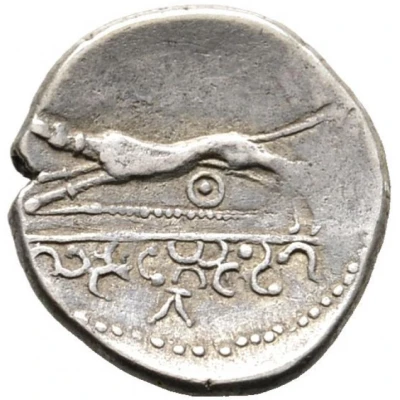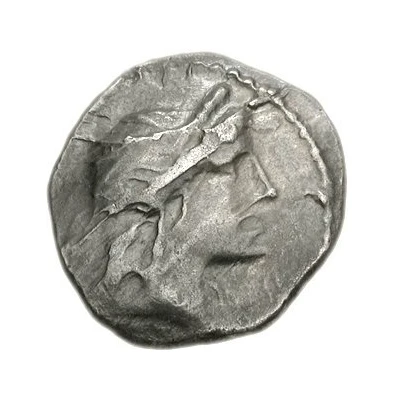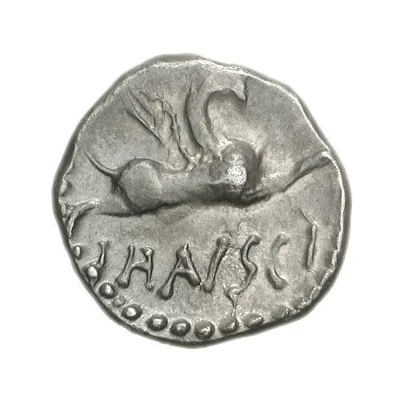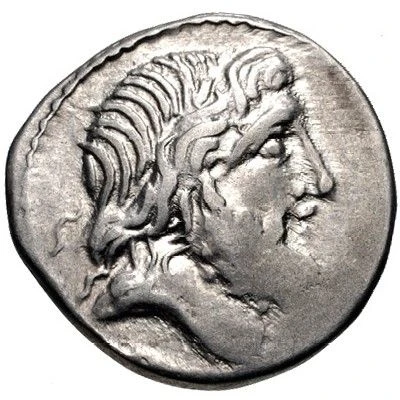
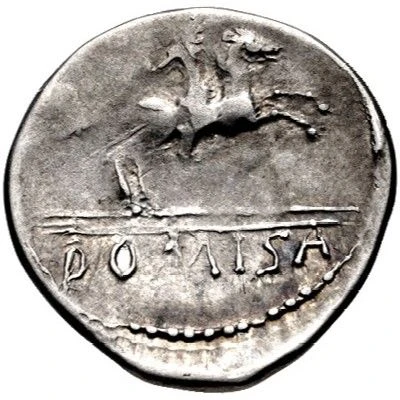

© Classical Numismatic Group, Inc.
Denarius 76 BC - 50 BC
| Silver | 3.03 g | 18 mm |
| Issuer | Eravisci (Central and Eastern European Celts) |
|---|---|
| Type | Standard circulation coin |
| Years | 76 BC - 50 BC |
| Value | 1 Denarius |
| Currency | Denarius |
| Composition | Silver |
| Weight | 3.03 g |
| Diameter | 18 mm |
| Shape | Round (irregular) |
| Technique | Hammered |
| Demonetized | Yes |
| Updated | 2024-10-09 |
| Numista | N#347527 |
|---|---|
| Rarity index | 97% |
Reverse
Horseman galloping right, hurling spear
Lettering: DOMISA
Comment
Imitating a Roman Republic denarius: Obverse types of Cn. Lentulus, reverse type of Pub. Crepusius, after 76 BC;Freeman 7 (4/E), cf. Cr-393/1 (O) and 361/1 (R); Davis A, II; Chitescu pl. VIII, 110
Reverse legend DOMISA, perhaps the name of an Eraviscan chieftain.
Quantities of Roman Republic denarii have been found in Balkan deposits, some with the tribal name of the Eraviscii. The prototypes of these denarii all date in the 80s and 70s BC. The implication is that there was a vast influx of Roman silver into the Balkans in the 70s and 60s BC. Crawford, in Coinage & Money Under the Roman Republic, attributes this influx to the expansion of the slave trade into the Balkans at this period. The east had been pacified by Pompey, eliminating the principal source of slaves, and incursions into Gaul had not yet begun in earnest, leaving the Balkans to supply a new source of manpower.
Interesting fact
One interesting fact about this coin is that it features a unique blend of Celtic and Roman influences in its design. The obverse side of the coin depicts a stylized head of a Celtic deity, while the reverse side features a traditional Roman design of a horseman riding a horse. This blending of cultural styles reflects the complex history of the Eravisci tribe, who were known for their skilled metalworking and trade networks that spanned across Europe.
